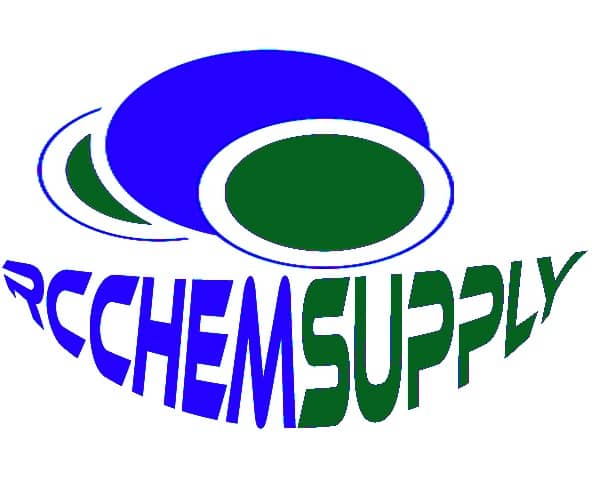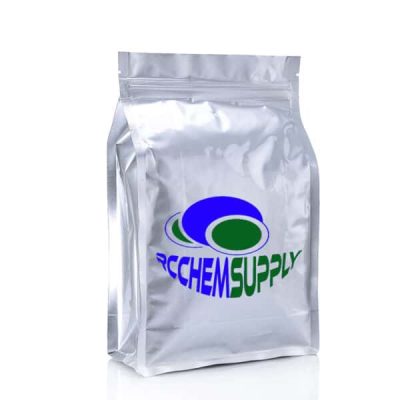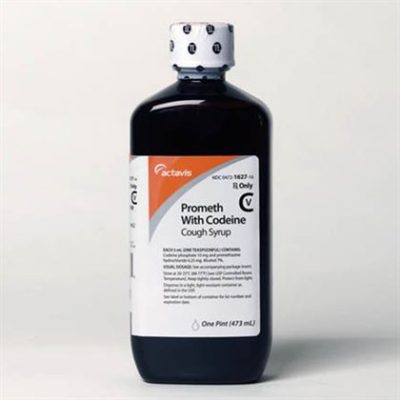Buy Palladium on carbon
1,000 $ – 50,000 $
10 palladium on carbon for sale
Palladium on carbon (Pd/C) is a form of palladium used as a catalyst, where the metal is finely dispersed on activated carbon to maximize its surface area and activity. The typical composition includes 5% to 10% palladium by weight, with 10% being a common choice for many applications. The high surface area of activated carbon enhances the catalytic properties of palladium, making it highly efficient for various chemical processes.
Buy 10% palladium on carbon
Did you know that palladium is a crucial catalyst in numerous chemical reactions, with applications spanning from pharmaceuticals to fuel cells? This essential metal, when supported on activated carbon, becomes a versatile tool in modern chemistry. Why is 10% palladium on carbon so widely used, and what makes it indispensable in various industries? Let’s delve into the world of this remarkable catalyst and uncover its myriad uses, preparation methods, and benefits. Buy 10% palladium on carbon from Rcchemsupply.net, often referred to as Pd/C, which is a form of palladium used as a catalyst. The metal is supported by activated carbon to maximize its surface area and activity. Buy 10 palladium on carbon here with bitcoin
What is Palladium on Carbon?
Palladium on carbon (Pd/C) is a form of palladium used as a catalyst, where the metal is finely dispersed on activated carbon to maximize its surface area and activity. The typical composition includes 5% to 10% palladium by weight, with 10% being a common choice for many applications. The high surface area of activated carbon enhances the catalytic properties of palladium, making it highly efficient for various chemical processes. (Wikipedia) (American Elements).
Palladium on carbon is used in a variety of industries, including pharmaceuticals, plastics, and petrochemicals. So it’s safe to say that this catalyst is pretty important!
| Property | Details |
|---|---|
| Name | Palladium |
| CAS NO. | 7440-05-3 |
| Molecular Formula | Pd |
| Melting Point | 1555℃ |
| Boiling Point | 3167℃ |
| Purity | 99% |
| Usage | Pharmaceutical Intermediates |
| EINECS | 231-115-6 |
| Alias | Palladium CAS 7440-05-3 |
| Appearance | Black powder |
Palladium 10% on carbon powder (CAS 7440-05-3)
Key Applications of 10% Palladium on Carbon
1. Hydrogenation Reactions
Hydrogenation is a critical process in organic chemistry, where Pd/C is extensively used to add hydrogen atoms to organic compounds. This includes:
- Reduction of nitro compounds to amines.
- Hydrogenation of alkenes to alkanes.
- Reduction of imines and Schiff bases.
2. Hydrogenolysis
Pd/C plays a significant role in hydrogenolysis, where bonds between carbon and other atoms (like oxygen or nitrogen) are cleaved in the presence of hydrogen. This is particularly useful for:
- Deprotection strategies in organic synthesis, such as the removal of benzyl groups from ethers and esters.
3. Coupling Reactions
The catalyst is also employed in coupling reactions like the Suzuki and Stille reactions, essential for forming carbon-carbon bonds in the synthesis of complex organic molecules.
Preparation of 10% Palladium on Carbon
The preparation of Pd/C involves several steps to ensure a high-quality catalyst:
- Dissolution of palladium chloride in hydrochloric acid.
- Addition to an aqueous suspension of activated carbon.
- Reduction of palladium(II) to palladium(0) using formaldehyde (American Elements)
The process requires careful control of conditions to achieve the desired palladium loading and ensure the catalyst’s effectiveness.
Benefits of Using 10% Palladium on Carbon
1. High Efficiency and Selectivity
The large surface area provided by activated carbon allows for maximum contact between palladium and the reactants, leading to high catalytic efficiency and selectivity.
2. Versatility
Pd/C is suitable for a wide range of reactions, making it a versatile catalyst in both academic research and industrial applications.
3. Economic Advantage
Using palladium in this dispersed form reduces the amount of precious metal required, offering significant cost savings without compromising performance.
Buy wholesale Palladium Carbon
What Are the Drawbacks of Using Palladium on Carbon?
There are a few drawbacks to using palladium on carbon. First of all, the catalyst can be expensive, depending on the supplier.
Second, the reaction takes place at a relatively low temperature, so it can be slow. And finally, the reaction can also be sensitive to impurities in the reactants.
How Is Palladium on Carbon Made?
When it comes to Palladium on Carbon, there are two main methods of production: chemical vapor deposition (CVD) and electrolysis.
With CVD, palladium is deposited onto a carbon target. This process is usually done in a vacuum, and it’s a popular choice for industrial applications.
Electrolysis is a bit different. In this method, carbon is placed in an electrochemical cell with palladium electrodes. When an electric current is applied, the palladium will dissolve from the anode and deposit on the cathode. This process is often used for small-scale applications, like laboratory research or jewelry making
Palladium on carbon is readily available from various suppliers and is used in numerous industries including:
- Pharmaceuticals: For the synthesis of complex molecules.
- Petrochemicals: In refining and processing operations.
- Alternative energy: In fuel cells and hydrogen production【7†source】【8†source】.
Technical Specifications
Here’s a summary of the typical properties of 10% palladium on carbon:
| Property | Specification |
|---|---|
| Palladium Content | 10% by weight |
| Appearance | Fine black powder |
| Melting Point | 1554°C |
| Boiling Point | 2963°C |
| Solubility in Water | Insoluble |
Safety and Handling
While palladium on carbon is generally safe, it’s crucial to follow proper handling procedures:
- Avoid inhalation: Use in well-ventilated areas.
- Prevent skin contact: Wear protective gloves and clothing.
- Fire hazard: Keep away from open flames as activated carbon can be flammable (American Elements) (matthey.com).
Key Takeaways
- Versatile Catalyst: 10% Pd/C is essential in hydrogenation, hydrogenolysis, and coupling reactions.
- High Efficiency: Enhanced by the large surface area of activated carbon.
- Economic: Reduces the need for pure palladium, offering cost savings.
- Broad Applications: Used across pharmaceuticals, petrochemicals, and alternative energy sectors.

What Are Some Common Applications of Palladium on Carbon?
When it comes to Palladium on Carbon, there are a few key applications that come to mind. For example, it’s often used in the production of polypropylene.
Pd/C is also sometimes used in the hydrogenation of fats and oils, and it’s sometimes added to gasoline to reduce emissions. Plus, Pd/C can be used for the catalytic conversion of methanol to ethanol. So as you can see, this catalyst is pretty versatile!
What is the use of Palladium in organic chemistry?
For catalytic hydrogenations in organic synthesis, palladium on carbon is utilized. Examples include debenzylation processes, imine and Schiff base reduction, carbonyl and nitro compound reduction, reductive amination, and carbonyl reduction.What is the main starting material for palladium?
Is palladium used in catalytic converters?
Catalytic converters, which transform up to 90% of the toxic gases in automobile exhaust (hydrocarbons, carbon monoxide, and nitrogen dioxide) into less toxic chemicals, use more than half of the supply of palladium and its congener platinum ( nitrogen, carbon dioxide, and water vapor).
Can Palladium 10% be used as a catalyst?
Not Intended for Diagnostic or Therapeutic Use. * Refer to Certificate of Analysis for lot-specific data (including water content). Palladium 10% on carbon powder can be used as a catalyst for hydrogenation of alkenes, alkynes, ketones, nitriles, imines, azides, nitro groups, benzenoid and heterocyclic aromatics. jwh-018 alternative
What Are Some Tips for Working With Palladium on Carbon?
When working with palladium on carbon, there are a few things to keep in mind. First, make sure the surface area of the activated carbon is maximized. This will help ensure that the catalyst is as effective as possible.
Second, always use a heat gun to activate the palladium on carbon. This will help to ensure that the catalyst is working properly.
Finally, be sure to clean the catalyst regularly. This will help keep it functioning at its best.
Palladium Carbon Powder Active Carbon Wholesale 10 pd on Carbon
When it comes to palladium on carbon, there are a few things you should know.
First of all, this is a type of palladium that’s used as a catalyst. It’s supported by activated carbon to maximize its surface area and activity. What this means is that palladium is more effective when it’s in contact with more surface area.
FAQs
Q: What are the primary uses of 10% palladium on carbon? A: It is primarily used in hydrogenation, hydrogenolysis, and coupling reactions in organic synthesis.
Q: How is 10% palladium on carbon prepared? A: By dissolving palladium chloride in hydrochloric acid, adding it to activated carbon, and reducing palladium(II) to palladium(0).
Q: Is 10% palladium on carbon safe to handle? A: Yes, but it should be handled with care, avoiding inhalation and skin contact, and kept away from open flames.
Conclusion
The 10% palladium on carbon catalyst is a cornerstone in modern chemistry, offering unmatched efficiency and versatility. Its applications span various industries, driving innovation and efficiency in chemical processes. Understanding its preparation, uses, and benefits can help leverage this powerful catalyst in both research and industrial settings (Wikipedia) (American Elements) (matthey.com).
By incorporating 10% palladium on carbon into your processes, you can achieve high performance and cost savings, making it an invaluable tool in your chemical arsenal.
Buy Boric Acid Magic Fishscale Flake online
| Quantity | 100g, 500g, 1000g, 2000g, 5000g, 10000g, 25000g, 100000g |
|---|
11 reviews for Buy Palladium on carbon
Add a review
Related products
Buy research chemicals USA legit
AMB-PINACA
ABB-PINACA is the highest potency CB1/CB2 agonist with high potency cannabinoid profile. AB-PINACA causes an analgesic effect through its CB1 and CB2 receptors, resulting in constriction of skeletal muscle fiber at spinal level 2 and induces mechanical hyperalgesia, while it also has anxiolytic and analgesic effects through CB1 receptors and has been found to exhibit anti-inflammatory, neuroprotective, anti-apoptotic, cardioprotective, anti-amnesic, and anticonvulsive activities. In addition, AB-PINACA has been shown to possess inhibitory activity at glucocorticoid receptors. This product is intended for research and forensic applications.TRADING CONDITIONS
- Availability: In Stock
- Packaging: Aluminum foil bag package done by an expert
- Purity: 99.8%
- Origin: China
- Minimum order: 10 Grams
- Production Capacity: 100KG/WEEK
- Transportation: Delivery done by EMS, DHL, FEDEX, UPS, and TNT
Buy Dissociative online
Buy N-Ethyl-ketamine online
N-Ethyl-Ketamine (NENK) is a designer drug that shares similarities with ketamine, a dissociative anesthetic known for its hallucinogenic and sedative effects. This compound, also referred to as ethketamine or 2-Cl-2'-Oxo-PCE, has been available for purchase online since around September 2012 and has been detected in seized drug samples in the UK and other European countries. In terms of its pharmacology, NENK acts as an NMDA receptor antagonist in mice and also functions as an AMPA and 5-HT2 receptor agonist.Buy cannabinoids online
Buy SGT-25 online
The synthetic cannabinoid 5F-CUMYL-PINACA, sometimes known as SGT-25 and occasionally marketed as C-Liquid for e-cigarettes, is based on the indazole-3-carboxamide molecule. The original patent claimed roughly 4x selectivity for CB1, with an EC50 of 0.1 nM for human CB1 receptors and 0.37 nM for human CB2 receptors.SGT-25 is not currently available for human use and should only be used for research purposes.
Buy research chemicals USA legit








Aarón –
The product I ordered was delivered to me in a timely fashion and it’s exactly what I wanted. Thank you!
Ricardo –
Not bad, but the service does not meet my expectations.
Camila –
Reliable and efficient. My go-to supplier now.
Ignacio –
Discreet packaging maintains confidentiality for sensitive research.
Maite –
Great experience from start to finish. 5 stars!
Jacobo –
I’m starting my PhD, and the research chemicals we use there have really been vital to my work. My research is going better than ever thanks to these products.
Amanda –
Technical bulletins provided help optimize product usage.
Fernando –
Tim –
Ich danke Rcchemsupply.net, denn alle meine Versandspezialitäten wurden stomach verpackt und ich habe alles so erhalten, wie ich es bestellte.
Theo –
I’m disturbed for the late recognition, as I just found this site several days earlier unexpectedly. However, since I have seen it and its organization is exorbitantly shocking. It contains first great research chemicals at low expenses.
Jannis –
I’m so grateful to these people! I order my research chemicals and they show up in 7 days! Thank you!